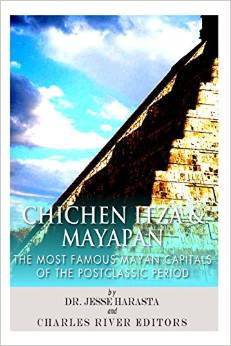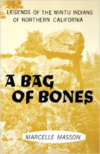Description
*Includes pictures.
*Includes footnotes and a bibliography for further reading. Many ancient civilizations have influenced and inspired people in the 21st century| like the Greeks and the Romans| but of all the world’s civilizations| none have intrigued people more than the Mayans| whose culture| astronomy| language| and mysterious disappearance all continue to captivate people. At the heart of the fascination is the most visited and the most spectacular of Late Classic Maya cities: Chichen Itza. Chichen Itza was inhabited for hundreds of years and was a very influential center in the later years of Maya civilization. At its height| Chichen Itza may have had over 30|000 inhabitants| and with a spectacular pyramid| enormous ball court| observatory and several temples| the builders of this city exceeded even those at Uxmal in developing the use of columns and exterior relief decoration. Of particular interest at Chichen Itza is the sacred cenote| a sinkhole was a focus for Maya rituals around water. Because adequate supplies of water| which rarely collected on the surface of the limestone based Yucatan| were essential for adequate agricultural production| the Maya here considered it of primary importance. Underwater archaeology carried out in the cenote at Chichen Itza revealed that offerings to the Maya rain deity Chaac (which may have included people) were tossed into the sinkhole. Although Chichen Itza was around for hundreds of years| it had a relatively short period of dominance in the region| lasting from about 800-950 A.D. Today| tourists are taken by guides to a building called the Nunnery for no good reason other than the small rooms reminded the Spaniards of a nunnery back home. Similarly the great pyramid at Chichen Itza is designated El Castillo (The Castle)| which it almost certainly was not| while the observatory is called El Caracol (The Snail) for its spiral staircase. Of course| the actual names for these places were lost as the great Maya cities began to lose their populations| one by one. Chichen Itza was partially abandoned in 948| and the culture of the Maya survived in a disorganized way until it was revived at Mayapan. Mayapan emerged first as a minor settlement in the orbit of Chichen| but it slowly came to replace it after the larger city’s trade connections with the Toltecs of Tula crumbled and it suffered a staggering defeat by Mayapan’s armies. The building styles and art in their city show both admiring references to the great Chichen Itza as well as an attempt to position Mayapan as a more orthodox heir of Maya tradition. At the same time| they emulated many features and could not escape the tremendous influences – especially in religion – of Chichen. This is seen in the fact that many of the most important buildings in the new city appear to be small-scale reproductions of ones in Chichen. Due in part to the fact that it has long been overshadowed by Chichen Itza| a lot excavation and scholarly research on the site has only come about in recent decades| and even though there is still plenty of work to do| a lot of information about life in Mayapan has been unearthed. At its height| Mayapan may have boasted a population of over 15|000| and archaeologists have had their hands full trying to discover and restore the several thousand buildings both inside Mayapan’s walls and outside them. Chichen Itza & Mayapan: The Most Famous Mayan Capitals of the Postclassic Period comprehensively covers the history of the city| as well as the speculation surrounding the purpose of Chichen Itza and the debate over the buildings. Along with pictures and a bibliography| you will learn about the Maya’s most famous cities like you never have before| in no time at all.






Reviews
There are no reviews yet.